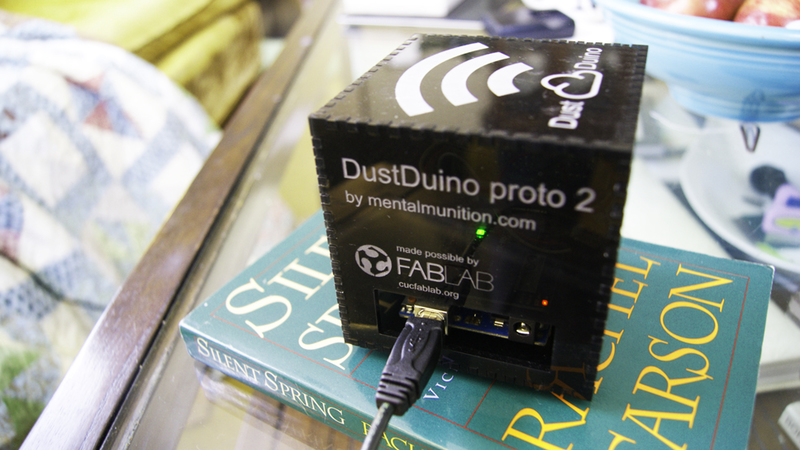
DustDuino
What is it?
DustDuino can help individuals with limited resources monitor PM10 and PM2.5 concentrations, indoors or outdoors. It uses Shinyei PPD42NS, a $15USD optical sensor that uses an LED and a lens to determine the concentration of dust in a partially closed chamber that draws in air from its surroundings. The sensor data is received by an Arduino development board and transmitted to Xively. Prototypes of DustDuino have been successfully built and used in various indoor and outdoor locations.
Test Results
Test results indicate that DustDuino provides accurate and useful information, albeit of a somewhat limited scope and under certain conditions. An academic study which compared the Shinyei sensor to costlier models used by governments, researchers, and companies found that this low-cost sensor produced results equivalent to much more expensive ones when analyzing data at hourly intervals.
There are still some unknowns with regard to the sensor - for example, whether it needs to be co-located with higher-quality instruments for calibration, and whether it could be used in extreme environments. There are also some limitations - the sensor may not produce high-quality information at time intervals shorter than an hour,
Photos
Why make one?
The health effects attributed to outdoor fine particulate matter (PM2.5) rank it among the risk factors with the highest health impacts in the world, accounting for over 3.2 million premature deaths annually. In October 2013, the World Health Organization announced they consider particulate matter, a major component of indoor and outdoor air pollution, as a Group 1 carcinogen along with tobacco smoke and asbestos.
